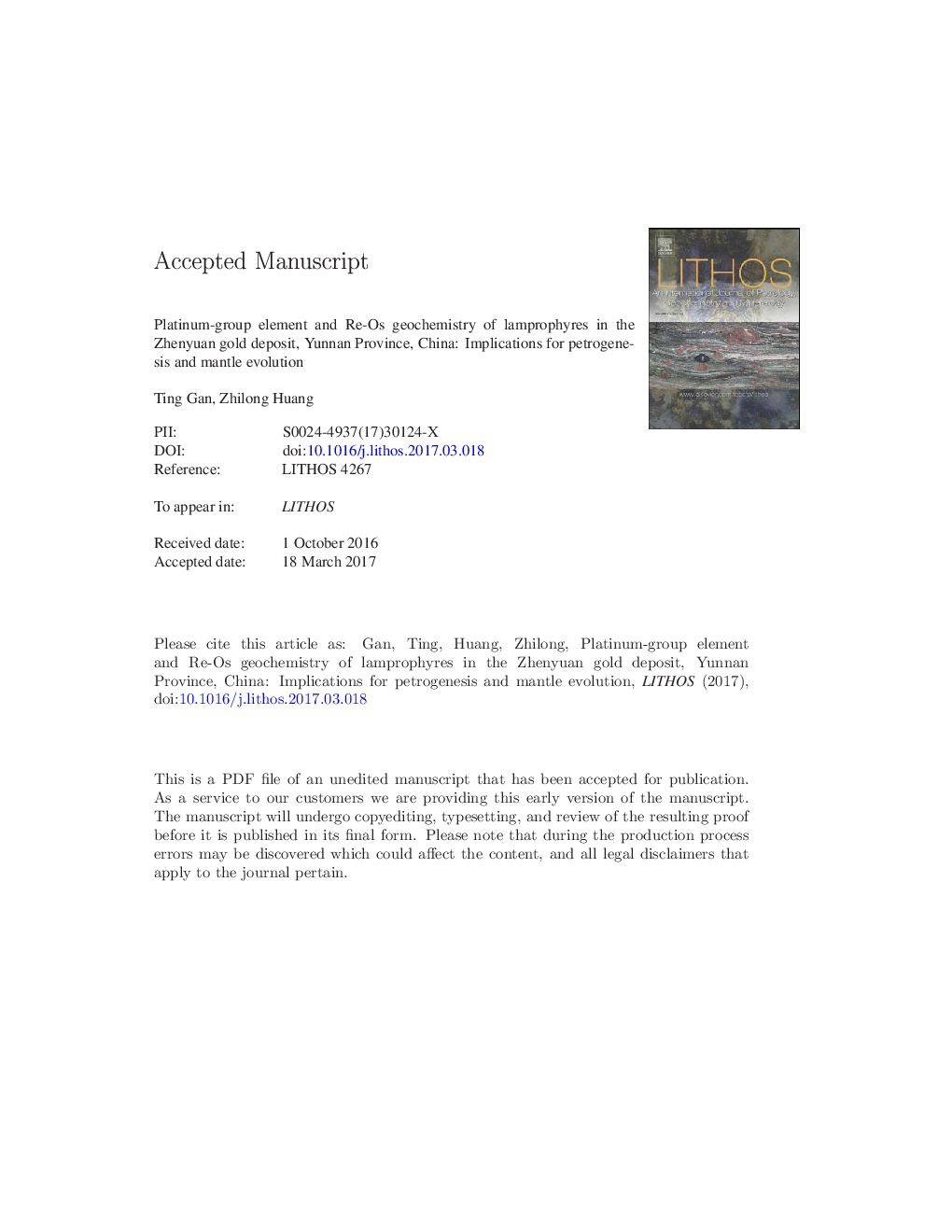| کد مقاله | کد نشریه | سال انتشار | مقاله انگلیسی | نسخه تمام متن |
|---|---|---|---|---|
| 5784131 | 1638631 | 2017 | 56 صفحه PDF | دانلود رایگان |
عنوان انگلیسی مقاله ISI
Platinum-group element and Re-Os geochemistry of lamprophyres in the Zhenyuan gold deposit, Yunnan Province, China: Implications for petrogenesis and mantle evolution
دانلود مقاله + سفارش ترجمه
دانلود مقاله ISI انگلیسی
رایگان برای ایرانیان
کلمات کلیدی
موضوعات مرتبط
مهندسی و علوم پایه
علوم زمین و سیارات
ژئوشیمی و پترولوژی
پیش نمایش صفحه اول مقاله

چکیده انگلیسی
Cenozoic lamprophyres are widespread along the Ailaoshan suture, SW Yunnan, SW China, where there are also many important gold deposits, especially the Zhenyuan deposit. We have carried out a geochemical investigation of the Zhenyuan lamprophyres in terms of major and trace elements, platinum-group elements (PGE), and Os isotopes. The Zhenyuan lamprophyres can be classified into groups with high or low Os concentrations. The 187Os/188Os ratios, corrected for in situ growth, are highly variable in both types of lamprophyre, ranging from mantle values up to 1.13. The highly radiogenic Os isotopic signatures are interpreted as being due to long-term accumulation of elevated Re/Os in the lithospheric mantle, as a result of subduction-related metasomatism. The highly variable 187Os/188Os ratios of the low-Os lamprophyres might also have resulted from metasomatism of a deeply derived carbonate melt, which did not elevate Os concentrations significantly. The Zhenyuan lamprophyres feature low PGE contents and can be classified into two groups: A and B, based on their primitive-mantle-normalized PGE patterns. Group A is characterized by strongly negative Ru anomalies, while Group B is characterized by slightly negative Ru anomalies and low total PGE contents. The PGE characteristics may be explained by a two-stage model of magma evolution. Very high Cu/Pd and low Pt/Y ratios indicate the first stage involved sulfur saturation and sulfide removal, producing variable total-PGE concentrations, especially in Group B. The second stage involved S-undersaturation and the early crystallization of silicate minerals (e.g., olivine) along with laurite and/or Ru-Ir-Os alloy, fractionating PGEs and producing marked negative Eu anomalies.
ناشر
Database: Elsevier - ScienceDirect (ساینس دایرکت)
Journal: Lithos - Volumes 282â283, June 2017, Pages 228-239
Journal: Lithos - Volumes 282â283, June 2017, Pages 228-239
نویسندگان
Ting Gan, Zhilong Huang,